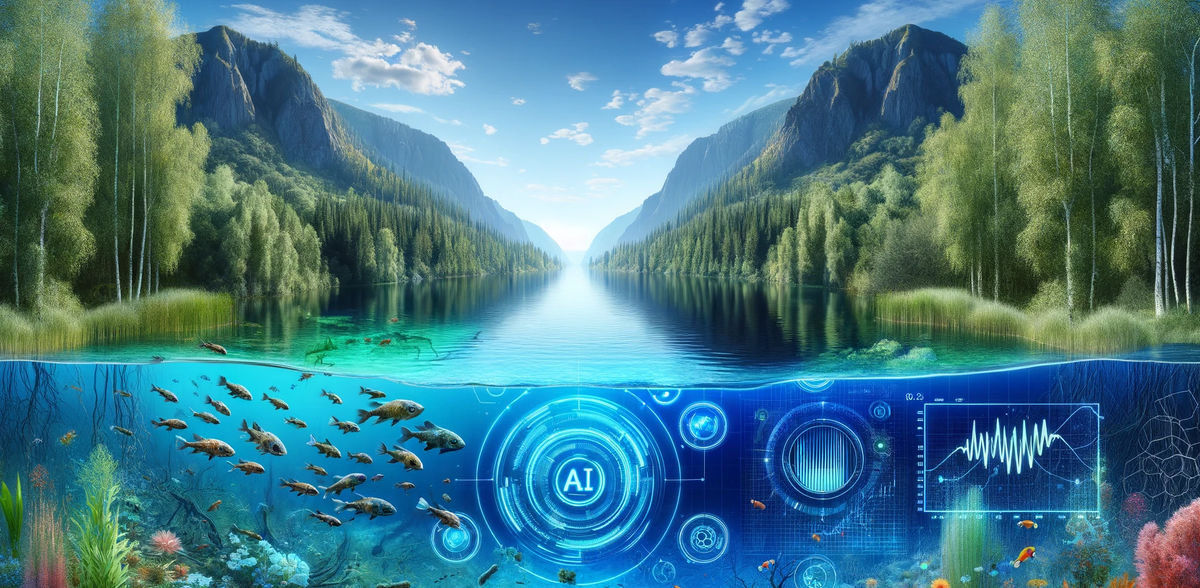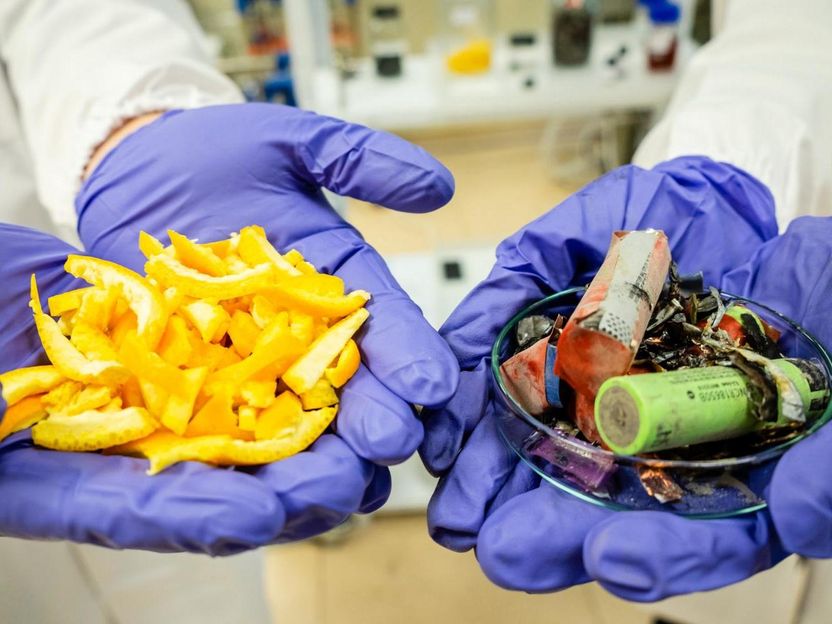Researchers develop “time machine for biodiversity”
AI shows species decline in a swimming lake
An AI model developed by a team of scientists from Goethe University Frankfurt and the University of Birmingham, led by Niamh Eastwood and Prof. Luisa Orsini, shows how water pollution, extreme weather events and rising temperatures can change and irreversibly damage the ecosystem of a freshwater lake over many decades. The model uses weather and climate data as well as data extracted from a sediment core taken from the lake and could in future be used to predict how ecosystems react to complex environmental changes. As such, it could serve as a “time machine for biodiversity”, so to speak, explaining past processes while simultaneously pointing to future ecological dangers.
The sediments of lakes and rivers are the long-term memory of bodies of water: It is here where, layer by layer, mineral, organic and chemical particles and substances are deposited over time. Using a sediment core from the “Ring Lake”, located near the city of Braedstrup in Denmark, the team of German and British scientists analyzed the DNA residues of plants, animals and bacteria as well as environmental toxins like pesticides or herbicides that have entered the lake over time and been deposited in the sediments. This allowed them to reconstruct the changes that have taken place in the lake’s ecological community as well as the pollution caused by nitrates and biocides, for instance, over the past 100 years.
“The subject of our investigation, the ‘Ring Lake’ in Denmark, is a body of water that was hardly polluted at the beginning of the 20th century. Over the course of the century, however, the lake was exposed to considerable environmental pollution. In the last years of the 20th century, water quality improved significantly,” explains Prof. Henner Hollert, environmental toxicologist at Goethe University Frankfurt, Fraunhofer IME and the LOEWE Center TBG for Translational Biodiversity Genomics. Coupled with its undisturbed sediment stratification, which makes the years visible in a manner similar to that of annual rings of a tree trunk, this made the lake such an interesting research subject.
The scientific team proceeded to link the analysis data from the drill core with climate records, focusing in particular on extreme temperatures and precipitation levels. Using artificial intelligence, they developed a model that explains the influence of environmental changes on the composition of the freshwater community and resolves them in terms of time and space. Their finding: 90 percent of the changes in the functional biodiversity of Ring Lake were due to the introduction of insecticides and fungicides in conjunction with extreme temperature and precipitation events.
Although nearby agricultural activity decreased at the end of the century, leading to an improvement in water quality, the German-British team of scientists found that this did not restore the lake’s original ecological condition.
Henner Hollert: “We were able to show that the loss of biodiversity in an ecosystem is not completely reversible: Biocenosis no longer functions as it did before, since species that performed certain services within the ecosystem are missing. We will now test our AI system – which we refer to as our ‘time machine for biodiversity’ – on other lakes, including as part of an ongoing interdisciplinary German Research Foundation (DFG) project on the interaction between humans and the environment in the late Middle Ages. Our partners in the latter are the Technical University of Darmstadt, Helmholtz Centre Potsdam – GFZ German Research Centre for Geosciences, the State Service for Heritage Protection and Management Baden-Wuerttemberg, and the Universities of Tübingen and Braunschweig. Lessons from the past can help us for the future: We aim to provide authorities with a warning system that can assess ecologically threatening developments at an early stage, thereby allowing countermeasures to be taken, for example restricting the use of certain biocides in the vicinity of an ecotope.”
Ecotoxicologist Professor Luisa Orsini, who also holds a Hückmann Endowed Visiting Professorship at Goethe University Frankfurt and is a member of the RobustNature network of excellence, underlines the advantages of the new AI-based method: “The high-throughput analyses we use allow us to observe the entirety of living organisms in an ecosystem and relate them to their environment. With this in hand, we can assess the long-term trends in an ecosystem’s development much better than with previous monitoring methods, which only focus on one or a few species, and identify the factors with the greatest impact on biodiversity.”
Original publication
Niamh Eastwood, Jiarui Zhou, Romain Derelle, Mohamed Abou-Elwafa Abdallah, William A Stubbings, Yunlu Jia, Sarah E Crawford, Thomas A Davidson, John K Colbourne, Simon Creer, Holly Bik, Henner Hollert, Luisa Orsini; "100 years of anthropogenic impact causes changes in freshwater functional biodiversity"; eLife, Volume 12, 2023-11-7

























































